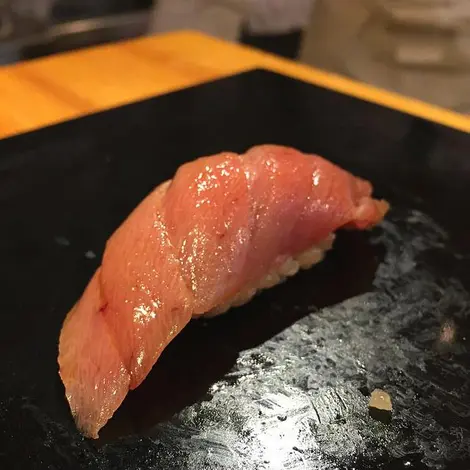How to cook sushi? 寿司を作る方法
All about sushi
Sushi is an iconic Japanese delicacy and comes in countless forms today. Its basic ingredient is Japanese round rice cooked with rice vinegar, sugar and salt, but it comes in several varieties, from nigiri sushi (the classic form best known abroad, this small cobblestone topped with a slice of raw fish) with maki sushi with fresh fruit, a more casual recipe.
What ingredients for a good sushi?
The basis of sushi is Japanese round rice with vinegar ( sumeshi ). To prepare it, you need to know the correct dose of water, vinegar, sugar and salt to combine for a dose of rice, generally a 1:1 ratio (a dose of water for a dose of rice) . It is possible to cook the rice in a pressure cooker or a pot. You'll know the rice is cooked if the grains are crisp white and come off easily.
Then add the mixture of rice vinegar , sugar and salt. Once the rice is cooked, you add this previously reduced mixture, stirring the rice with a spatula. This gesture allows the sauce to be well incorporated into the rice and also cools it.
The other essential ingredient for nigiri sushi is the garnish, often a slice of raw fish . Regardless of the fish used, the flavor and texture of sushi are based on two criteria: the quality of the fish and the way it is cut. As with sashimi , cutting raw fish for sushi is an art in its own right. The great sushi master Jirô Ono has proven it.
See also: The profession of sushi chef
How to shape sushi?
Although its shape is refined and extremely simple , the modeling of the sushi is not left to chance. Chefs sometimes have to practice for years before their sushi meets the rules of the art. The sushi should be eaten in one bite and the amount of rice and fish should balance out on the palate.
Moreover, in accordance with the Japanese culinary art, the sushi must of course have an appetizing appearance. The slice of fish should cover the bite of rice and the rice should not fall apart because you are supposed to take it between your fingers and dip it in the sauce to eat it!
To read: How to taste your sushi?
If the sushi must be modeled by hand according to the Japanese tradition , today there are utensils specially designed to save time (especially at home) during preparation: small boxes in which it is enough to pack the rice for him give the required shape and volume. Thanks to this type of accessory, it's hard to go wrong!
Serve sushi like the Japanese
Traditionally, three types of condiments accompany sushi: wasabi (a cousin of horseradish), pickled ginger ( gari ), and salty soy sauce . In some sushi restaurants, you may have the privilege of asking for fresh wasabi, which is stronger and tastier than wasabi paste...and much more expensive.
In many Japanese restaurants abroad, sushi is served in a non-traditional way, that is to say with a dab of wasabi that is mixed with soy sauce... But in Japan, wasabi is often served in the sushi itself, in very small doses and not all sushi recipes lend themselves to any accompaniment.
Pickled ginger is an ingredient often served as an accompaniment to sushi and considered a " refreshment of the palate ". It is therefore recommended to eat it between each sushi, to be able to feel the taste of each bite as if it were new. Note: pickled ginger is naturally white or yellow . If it's pink, it's because an attractive food coloring has been added!
The different types of sushi
Sushi is a generic term for a bite made from vinegared rice. Beyond its classic nigiri form, you will also come across maki sushi (roll surrounded by nori seaweed), temaki sushi (cone), inari sushi (sushi contained in a sheet of tofu), futo maki (thick roll of maki)... c hirashi-zushi (bowl of rice with slices of raw fish) is also considered a form of sushi! The fillings then change according to the recipes and the chefs: there are sushi with raw fish, semi-cooked, Japanese tamago omelette, fish eggs...
Some cities in Japan also have their own sushi , such as in Nara, with the "Kakinoha-zushi" . This is a special recipe where rice and fish are placed inside a persimmon leaf (the persimmon tree). Then let everything ferment for a few days in a wooden box. This sushi is considered a great delicacy and is a perfect present to bring back from your stay in Nara.
Over time and the inventiveness of the chefs, we have therefore developed all types of sushi… which for some are no longer even of Japanese origin! It is the "california maki" for example, which is none other than an American recipe. These innumerable culinary possibilities have made small Japanese sushi a dish declined and appreciated all over the world !
To go further: Five Japanese cooking classes in Tokyo
Sushi recipe to make at home

























